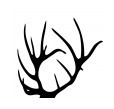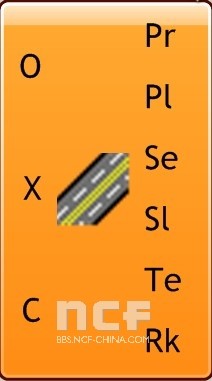|
本帖转自网络,作为对蒯鼎rhino入门讲座中提到的插件的小普及,供大家参考学习。
DIVA-for-Rhino 是一个高度优化的采光和能量的建模插件,该插件最初发育研究所的设计在哈佛大学和现在是分布式和研制而成,允许用户进行一系列的环境绩效评估个人的建筑和城市景观包括辐射地图,照片般逼真的渲染,采光度量,眩光和个人时间步长进行了分析,LEED,采光遵守,单热负荷计算区域能源等。
天后2.0新特点
Annual glare maps年度眩光地图,这将产生一个年度眩光的地图,预测所有观点时间在场景中这一干扰或无法忍受的眩光。结果显示为一个html报告与嵌入式图像。请注意,如果文章计算年度型材,它们用于基础度量计算的气候,如果一个动态着色系统已经被确定。Dynamic Shading Module动态着色模块 ,这个模块允许用户指定高达两个独立控制系统动态阴影。
一个材质系统可以机械(百叶窗)或可调(变化)。各种手动或自动控制可供选择。当一个动态着色系统已经被确定,它被认为是气候一年一度的基础度量计算的现状与遮阳系统在去年被显示在一个html报告与嵌入式图像。
Electric Lighting Module电气照明模块这个模块允许使用指定多达十电气照明区在一个场景。任何光照区域可以自动或手动控制。电气照明计算被充分整合与着色而导致负荷计算每小时型材电气照明能被连接到EnergyPlus或其他热模拟程序。
Thermal Load Calculation热负荷计算 热负荷计算允许用户建立一个单一的热区和指定犀牛的一些基本性质和使用热建设模式。租客,光影时间表取自采光模块。仿真结果显示,在一个html报告与嵌入式图像。
Grasshopper Improvements蝗虫改进 采光分析组件已经检查提供给用户位置参数控制项目和模拟型和设置。这意味着你不需要的主要的构件运行一个工具栏每次都要发起或改变你的分析。热部件也被更新了几个错误。
The ShortestWalk add-on for Grasshopper exposes one component which, given a network of curves and a list of lines, calculates the shortest route from line start point to line end points in a network. 简单说就是找到两点间的最短路径。它本身是基于一个计算器和拓扑A搜索的算法. 上成果图片
ELK 麋鹿

它的存在让很多用CAD的做的事情现在更加简单,易行,准确了,对规划专业尤其方便,颇有湘源控规的意思。对建筑景观的同学也还是有用的,可用作基地建模 麋鹿是一组用来生成地图以及地形表面的工具,一共有八个运算器:

麋鹿的几个运算器: OSMData Component: 可以导入地图中点位的经纬度

Road/Rail/Water Components:





其实这几个运算器的使用方式是差不多的,只不过区分出水路,主干路,高速路等等而已。 Generic OSM Component: 通用的OSM组

SRTM Topo Component:这也是一个对应数据的运算器

效果图:导入的某城市部分道路图
最终效果:
GECO壁虎

Ecotect is a highly visual software for architects to work with environmental performance issues. It is designed for early stages of conceptual design, and encourages play to understand environmental factors and interactions. So making use of Grasshopper developed a new interface named GECO, which offers a direct link between Rhino/Grasshopper models and Ecotect. The Plug-in allows you to export complex geometries very quickly, evaluate your design in Ecotect and access the performances data, to import the results as feedback to Grasshopper. This could be done as single process or loop to improve performance and the design of a building in the context of its environment. The single results of the process could be saved inside Rhino in the vertices of the analysis mesh to store data for later use inside different design approaches.
GECO能做的事情就是借助GH这个平台,将复杂的形体利用ECOTECT做分析,达到一个令人满意的效果 如果你安装成功了,应该是这样的一个状态
利用GECO,你可以做出这样的一些效果:
Weaverbird 织巢鸟
织巢鸟是一个的拓扑建模工具,包含许多已知的细分和转型的运营商,易于使用的设计师。而不是反复做工作,有时甚至使用复杂的脚本,这个插件重建的形状,任何网格细分,甚至是由多段线,并帮助准备制造。
Catmull-Clark smoothing (wbCatmullClark).
Calculates the type of mesh-based recursive subdivision described by Edwin Catmull and Jim Clark, at first in 1978. The resulting mesh always consists of quadrilaterals.
Split mesh into Quads (wbSplitQuad).
Calculates a new mesh, which is formed of only quads and generally appears similar to the old one, except that it is welded. It is topologically equivalent to the Catmull-Clark subdivision.
Loop smoothing (wbLoop).
Calculates the type of mesh-based recursive subdivision described by Charles Loop, at first in his Mathematics thesis in 1987. The resulting mesh always consists of triangular faces.
Split mesh with inner face (wbSplitPolygons).
Places a new face departing from the middle of each original face edge. Caps the remaining hole with Sierpinski triangles.
Sierpinsky Triangles subdivision (wbSierpinskyTriangle).
Places a triangle in each corner of a mesh face. The mesh will have one more hole per face.
Frame (wbFrame).
Computes a new mesh with higher naked edge count, where each face has a new hole in the center and resembles a picture frame. The resulting mesh always consists of quad faces.
Carpet (wbCarpet).
Computes a new mesh with higher naked edge count, where each face has a new hole in the center. The resulting mesh always consists of quad faces, and can be used to compute a Sierpinski carpet.
Window (wbWindow).
Replaces each original mesh face with a new one, reconstructed on the inside. Each face has the same number of sides as the original one.
New mesh primitives definitions:
wbPyramid
wbDiPyramid
wbPrism
wbAntiPrism
Additional commands:
- wbOptions. To see the main log, set up the threading model, control the maximum time a single operation is allowed to take, and set options for the Loop subdivision scheme (to use Loop’s receipt or Warren-Weimer’s one).
- wbProperties. Opens a window with topological information about any mesh object in Rhino. Exposes triangular and quad face counts, edge count, current and welded vertex counts.
使用织巢鸟,你可以做出这样的一些效果:
| 
